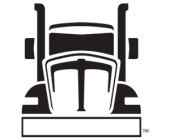STRATEGIZE BEFORE MAKING YOUR FLEET PURCHASES
Fleet managers spend a significant amount of time controlling their operational costs. Fuel takes the largest chunk of the fleet budget, and therefore it is necessary to opt for strategies that may help you cut down on your fuel expenses. With the advancement in modern technology, a number of technologies have cropped up, such as telematics, that can help reduce the total mileage of your fleet’s drive. Similarly, the equipment which reduces the engine time is worth evaluation as well.
Other important factors determining the operating budget are the direct maintenance cost, evaluation of maintenance policies, shopping for repair parts and comparison of outsourced vs. in-house maintenance cost. All of these actions play a crucial role in generating operational savings, however, the most effective and most important area, in order to minimize the long-term operational costs is fleet acquisition costs.
FLEET ACQUISITION COSTS
Fleet acquisition cost refers to the actual vehicle cost, overhead costs and associated with fitting costs of funding the acquisition. In fleet acquisition, the first step is to evaluate and determine the use of the vehicle, ensuring that the specification and the design of the vehicle match well with the requirements in question. The addition of complex components may increase the productivity, however, there will be tradeoffs. The addition of extra components would also increase the upfront cost of the vehicle, as well as the weight and would consequently demand higher maintenance costs. The additional weight, on the other hand, will also increase the engine’s idle time, which directly influences the fuel economy.
However, this does not imply that one should not consider adding extra components. Yet, prior to adding components, it is important to calculate the long term use and benefits with NPV (Net Present Value) cost analysis. With NPV cost analysis, you can evaluate both productivity add-ons and upgraded vehicle chassis components. For this analysis, start by identifying the internal cost and then determine the payback period (how quick the additions/upgrade would return the invested cost).
Being a taxpayer, it is also important for you to consider the rate of income tax to determine the influence of depreciation on the added upgrades. Investment on your truck is likely to have 0 NPV by the end of the payback period possibly if the return equals to your cost of investment. If the payback is less, your NPV would be negative, and if the value is more, it will be positive.
Another factor which influences the NPV analysis is the source of money. Money can be collected from different sources, including direct borrowing, internal capital, and leasing. The question to be answered is “Which is the most suitable for me?”. The method through which you determine which is important for you is influenced by the asset in question, alternative opportunity costs, internal money cost and the market cost of loan/debt. Only because people always finance their new vehicles using a single option does not mean it is wise to do so. Moving on to the next most significant factor is determining how the government authorities control capital investments when it comes to depreciation purposes. It is always changing and must be evaluated annually.
Prior to buying, ask yourself again why you need the truck you are purchasing. Only because the vehicle currently falls into your fleet does not mean that it requires a change. It may initially be meeting a demand that is no longer valid today. Similarly, many trucks you may already own may be performing simple tasks. Shifts in increased productivity or demand of the tasks of the fleet, because of upgrades may eliminate the requirement for some units. The evaluation process for the demand of all the vehicles you own refers to “right-sizing” and is a part of vehicle replacements evaluation cycle process. Elimination of vehicles with no or low productivity in your fleet is likely to reduce your routine maintenance, investment and licensing costs, and may also allow you to reduce the labor force required for maintenance.
Shane Petersen
Truck/Fleet Sales
509- 710-2106




